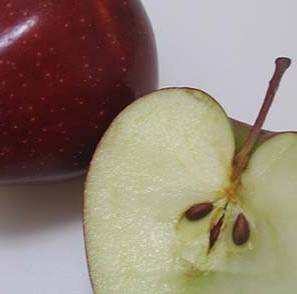 The Habsburgs, Cheviot sheep, and red delicious apples. What do they all have in common? Over breeding — which lead to a mentally impaired Spanish king, sheep the size of small dogs, and apples that while gorgeous, taste like cardboard.
The Habsburgs, Cheviot sheep, and red delicious apples. What do they all have in common? Over breeding — which lead to a mentally impaired Spanish king, sheep the size of small dogs, and apples that while gorgeous, taste like cardboard.
A few wars and new blood took care of the European monarchs, and a legion of international sheep farmers rescued the Cheviot from being a lap animal of the French elite. The red delicious, however, remains a lost cause save for interior decorators. This is too bad because so many farmers ripped out acreages of perfectly good apple trees to grow the pretty red apples with the bumps on the bottom and a major marketing push behind them.
And while I would like to report that the apple industry has learned its lesson, one need only look to the case of the Honeycrisp to see that this isn’t so.
Throughout Michigan, growers are again taking out acreages of perfectly good apples to grow Honeycrisps. In Canada, the government of Nova Scotia has encouraged local orchards to increase acreages of Honeycrisp with the Honeycrisp Orchard Renewal Program. Through 2010, Nova Scotia apple producers can replace older apple trees with Honeycrisp trees at a subsidized rate. Mind you apples from these trees will take eight to ten years to reach market.
Don’t get me wrong, I think it’s great that people are excited about eating apples. What I don’t think is great is that an apple that only performs well north of the Minnesota state line is displacing other apples in orchards and on shelves in Illinois.
Were said apple doing this solely on the basis of its quality that would be one thing. But the University of Minnesota, which was getting a $1 per tree in royalties through last November, some $8 million total, has been engaged in a Honeycrisp media blitz in recent years.
Nowhere are the results of this blitz more apparent than with young, impressionable college students. You can see the impact of Minnesota’s PR campaign on University of Illinois horticulture professor Bob Skirvin’s annual apple lab. On a website created by Sarah Chen which is dedicated to the event, you can clearly see the Honeycrisp rising from obscurity in 2004 to become the top apple in 2009.
What you don’t see is that 2009 Illinois Honeycrisp crop suffered badly from wet growing conditions. Its flavor is actually diluted and its texture is mealy. However, believing that the name that they had heard the most should receive the highest ranking, the students picked the Honeycrisp as the best apple anyway.
This is unfortunate as Honeycrisps also do not tolerate heat which will come back to bite the apple industry. Because growers are attempting to grow Honeycrisps in areas that are not suited to the apple like Illinois and any place south of Minnesota, sub-par Honeycrisps will be finding their way into the market. This means unsuspecting consumers will get burned, and with them, Honeycrisp growers. With any luck, the University of Minnesota which is now attempting to license Honeycrisp progeny, will see some of the fallout from this for its hand in displacing regional and better performing apples.
Appreciating diversity is what the apple lab is supposed to be about. And if the apple industry had its head pulled out, it would be celebrating biodiversity instead of rushing head long into another red delicious disaster.
So, head to your local orchard and fruit stand this fall. Try the vast variety of apples we are blessed with here in East Central Illinois-solid performing apples like Empires, Jonagolds, and Priams — anything but Honeycrisps.








